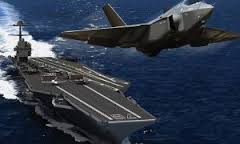
Breaking News
 HERE'S WHAT NO CASH ACTUALLY MEANS (Dave Ramsey re-post)
HERE'S WHAT NO CASH ACTUALLY MEANS (Dave Ramsey re-post)
 The Silver Shift: Why Stackers Are DUMPING 90% Silver & Buying SilverBitz!
The Silver Shift: Why Stackers Are DUMPING 90% Silver & Buying SilverBitz!
 Eye-bouncing - #SolutionsWatch
Eye-bouncing - #SolutionsWatch
 'Targeted, Antisemitism': 16 Dead, 38 Injured After Father & Son Terrorists Attack...
'Targeted, Antisemitism': 16 Dead, 38 Injured After Father & Son Terrorists Attack...
Top Tech News
 This tiny dev board is packed with features for ambitious makers
This tiny dev board is packed with features for ambitious makers
 Scientists Discover Gel to Regrow Tooth Enamel
Scientists Discover Gel to Regrow Tooth Enamel
 Vitamin C and Dandelion Root Killing Cancer Cells -- as Former CDC Director Calls for COVID-19...
Vitamin C and Dandelion Root Killing Cancer Cells -- as Former CDC Director Calls for COVID-19...
 Galactic Brain: US firm plans space-based data centers, power grid to challenge China
Galactic Brain: US firm plans space-based data centers, power grid to challenge China
 A microbial cleanup for glyphosate just earned a patent. Here's why that matters
A microbial cleanup for glyphosate just earned a patent. Here's why that matters
 Japan Breaks Internet Speed Record with 5 Million Times Faster Data Transfer
Japan Breaks Internet Speed Record with 5 Million Times Faster Data Transfer
 Advanced Propulsion Resources Part 1 of 2
Advanced Propulsion Resources Part 1 of 2
 PulsarFusion a forward-thinking UK aerospace company, is pushing the boundaries of space travel...
PulsarFusion a forward-thinking UK aerospace company, is pushing the boundaries of space travel...
 Dinky little laser box throws big-screen entertainment from inches away
Dinky little laser box throws big-screen entertainment from inches away
 'World's first' sodium-ion flashlight shines bright even at -40 ºF
'World's first' sodium-ion flashlight shines bright even at -40 ºF
U.S. Navy Converts Seawater Into Jet Fuel And Successfully Flies Aircraft

This could change everything when it comes to refueling out on the open sea.

Credit: General Atomics
Researchers at the United States Naval Research Laboratory have developed an innovative method for extracting carbon dioxide and producing hydrogen to create one thing: hydrocarbon liquid fuel. The fuel powers jet engines without generating additional harmful byproducts.
The research began over a decade ago and was powered by the need for an alternative method of refueling U.S. Navy vessels underway, which can be costly when considering time, logistics, and potential national security dangers.
Dr. Heather Willauer, the lead investigator for the research lab, said,
"The potential payoff is the ability to produce JP-5 fuel stock at sea reducing the logistics tail on fuel delivery with no environmental burden and increasing the Navy's energy security and independence."
It's a complicated process, but the two-step procedure has up to a 60 percent conversion rate from carbon dioxide to hydrogen and they have decreased the production of unwanted methane from 97 percent to 25 percent.

Credit: Anon HQ
To test the effectiveness of the fuel, the researchers used a radio-controlled scale-model replica of a World War II aircraft that is complete with an internal combustion engine. The experiment went well, and hopefully the results translate equally into a real jet.
The majority of U.S. Navy vessels today require oil-based fuels, which can be tough to deal with because of price fluctuations and potential shortages.
Vice Admiral Philip Cullom said this of the technology:
"It's a huge milestone for us. We are in very challenging times where we really do have to think in pretty innovative ways to look at how we create energy, how we value energy and how we consume it. We need to challenge the results of the assumptions that are the result of the last six decades of constant access to cheap, unlimited amounts of fuel."



